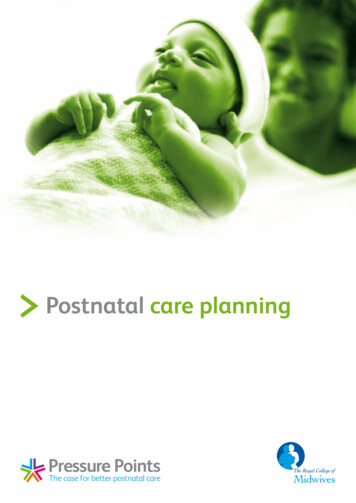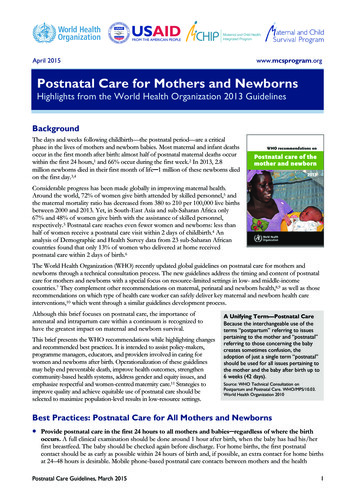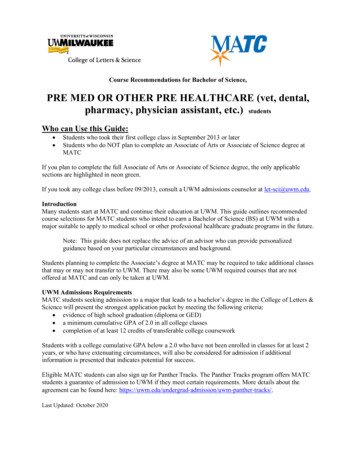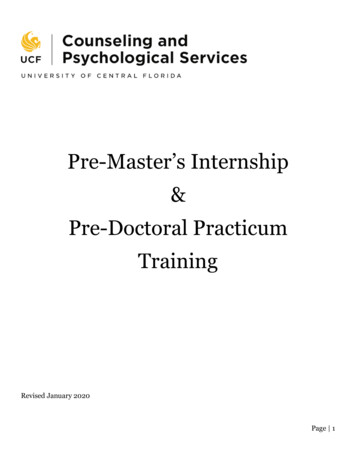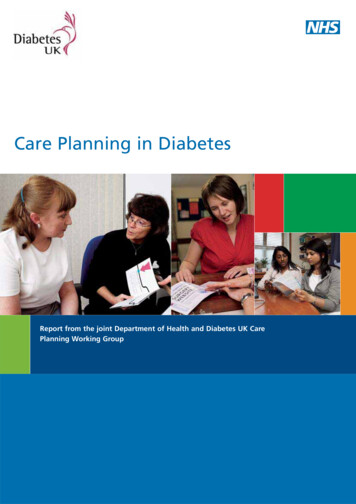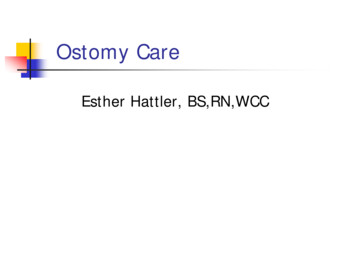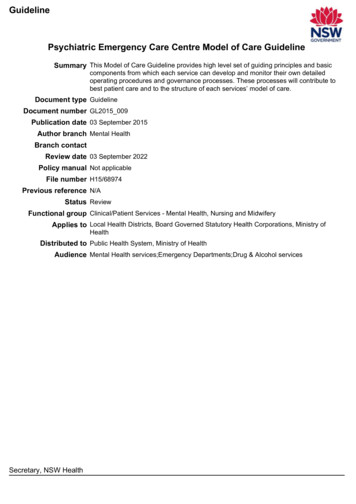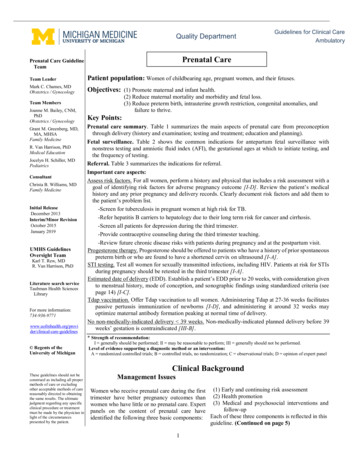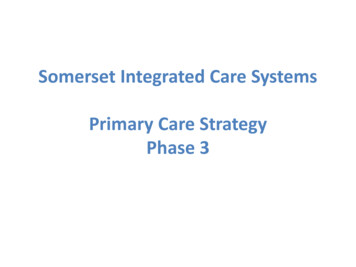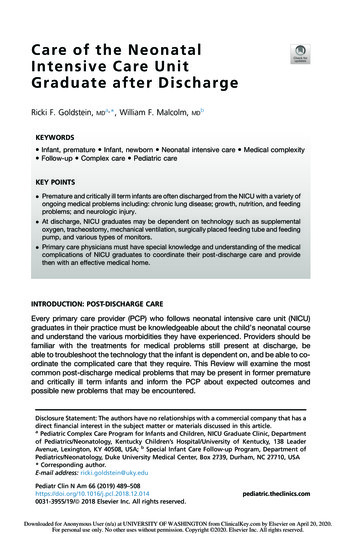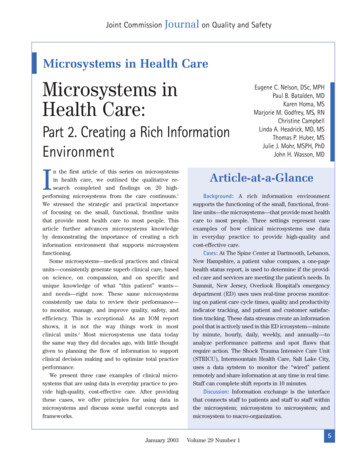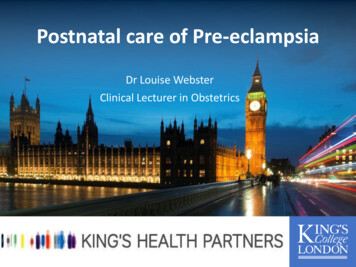
Transcription
Postnatal care of Pre-eclampsiaDr Louise WebsterClinical Lecturer in Obstetrics
Objectives: Why is this important? Normal physiology Diagnosis Management Long term implications
Why is this important?Timing of maternal deaths from hypertensivedisorders of pregnancy, UK and Ireland, 2009–14Time period of deathsNumber (%)n 14Antenatal period or on day of delivery3 (21)Postnatal 1 to 42 days after delivery10 (71)Postnatal 42 days after delivery1 (7)
Why is this important?Timing of maternal deaths from hypertensivedisorders of pregnancy, UK and Ireland, 2009–14Time period of deathsNumber (%)n 14Antenatal period or on day of delivery3 (21)Postnatal 1 to 42 days after delivery10 (71)Postnatal 42 days after delivery1 (7)
Why is this important?
Normal physiology: postpartum Immediately after birth: BP falls Then rises to peak 3-6 days postnatally Transient hypertension may occur postpartum inNORMAL pregnanciespreconception toChanges in brachial,central SBP and DBP frompostpartum period(T2 second trimester andT3 third trimester)
Normal physiology: postpartum Immediately after birth: BP falls Then rises to peak 3-6 days postnatally Transient hypertension may occur postpartum inNORMAL pregnanciespreconception toChanges in brachial,central SBP and DBP frompostpartum period(T2 second trimester andT3 third trimester)
Identifying postnatal hypertension 1 to 28% of women Check BP 6hrs post birth even in normotensivewomen (NICE) Check BP day 5 postpartum Inform all women of symptoms of preeclampsiaand who to report to if unwell
Postnatal hypertension/proteinuria 90% of chronic hypertension primary 10% underlying renal, endocrine, cardiac/arterial disease Uncommon in young women Most likely renal origin
Postnatal hypertension/proteinuria Consider if: BP often 160/ 100 young age at onset requiring several agents previous Hx severe early onset PET Investigations: Bloods: U&E’s, ANA and autoimmune profile(?Vasculitis) Renal US Urinalysis: ? 24hr collection for catecholamines(phaeochromocytoma) If hypokalaemic consider renal or metabolicpathway
Postnatal management of pre-eclampsia Immediate management Ongoing management of women diagnosedante/intrapartum Women diagnosed postpartum Discharge planning/community management Long term implications
Immediate managementSevere PET Seizure prevention/ control: MgSO4 Blood pressure control (same parameters, more drugs canuse PN) Fluids: Restrict Remember all infusions When possible change to oral fluids Analgesia NO NSAIDS Epidural top up Opioids (remember laxatives) Paracetamol Liver/ clotting: VTE
Magnesium Sulphate 44% of eclamptic seizures are PN MgSO4 for at least 24 hours from delivery Observe for respiratory depression and bradycardia Reduce infusion if oliguric Consider levels if very abnormal U&E/LFT
Oliguria Causes: Inadequately filled Blood loss Blocked catheter Renal failure Surgical Consider central line
Oliguria Aim for urine output 80ml in 4 hoursIf 80ml/4 hours (or 20ml in 2 hours) Measure renal function and consider hypovolaemiadue to blood loss If CVP in situ and low consider fluid bolus If creatinine normal repeat in 4 hours If creatinine rising fluid bolus (250-500ml) and if noresponse within an hour insert CVP line
Why no NSAIDs? Reduce renal blood flow Common cause of post partum kidneyfailure Reversible Can cause pulmonary oedema
Monitoring Keep in level 2 area for 24 hours Hourly urine output Hourly BP, Pulse, RR, CVP (if measuring) ? Reflexes (yes if MgSO4) Review by senior obstetrician 6-12 hourly 6-24 hourly bloods (dep on severity)
Postnatal complications of pre-eclampsia ThrombosisAcute Kidney Injury- need to ensure not chronicHELLPIntracranial bleedPRESReversible Cerebral VasoconstrictionCardiomyopathyHepatic subcapsular haematoma
Long term implications, discharge planningand management in community Postpartum monitoring Managing medications Managing end-organ disease Proteinuria Renal and liver dysfunction VTE Contraception Long term implications Counselling for the future
Postpartum monitoring in pre-eclampsia BP at least 4 x day whilst an inpatient & enquire resx BP once per day, days 3-5 Alternate days from day 5 until normal Start antihypertensive if 140/90Low threshold for medical review
Managing hypertension If chronic HTN consider switching toantihypertensive that controlled BP pre-preg Switch from methyldopa Gestational HT may take 3/12 to resolve (consider2ndary causes if persists) Aim for BP 135/85 mmHg and consider once dailydosing: Enalapril Amlodipine (Atenolol)
Postpartum management pre-eclampsia Proteinuria can take 12 months to resolve If proteinuria persists @ 3/12 PN consider renalreferral May need repeat bloods to confirm no lastinghepatic/renal damage (only if abnormal @ dischargefrom hospital) & all should have urine dipstick @ 68/52 r/v Consider postnatal obstetric debrief 6/52 Consider woman’s mental health and support forpartner
egnancy/
Contraception Barrier Intra-uterine device Hormonal (avoid COCP) Long term
Transfer to community care If no symptoms BP with or without treatment is 149/99 or lower Bloods stable, improving Care plan Who will follow up Frequency of monitoring Thresholds for treatment Indications for primary care referral Self monitoring
Postnatal counselling BMI, smoking, spacing of pregnancies Risk of recurrence Plan for care in subsequent pregnancies aspirin, growth scans, reg BP in 3rd trimester Tocophobia Support for partner
Future risks In future pregnancies: Risk of gestational HT 13-52% (1 in 2-8) Risk of PET 16% (1 in 6) If previous severe PET, HELLP or eclampsia 25% (1in 4) If above with delivery 28/40 (1 in 2) In later life: If PET x4 increased risk of HTN and CV disease x2 risk of CVA/IHD
@DrLouiseWebster@APEC UK#preeclampsia
Transfer to community care If no symptoms BP with or without treatment is 149/99 or lower Bloods stable, improving Care plan Who will follow up Frequency of monitoring Thresholds for treatment Indications for primary care referral Self monitoring . Postnatal counselling BMI, smoking, spacing of pregnancies Risk of recurrence Plan for care in .
